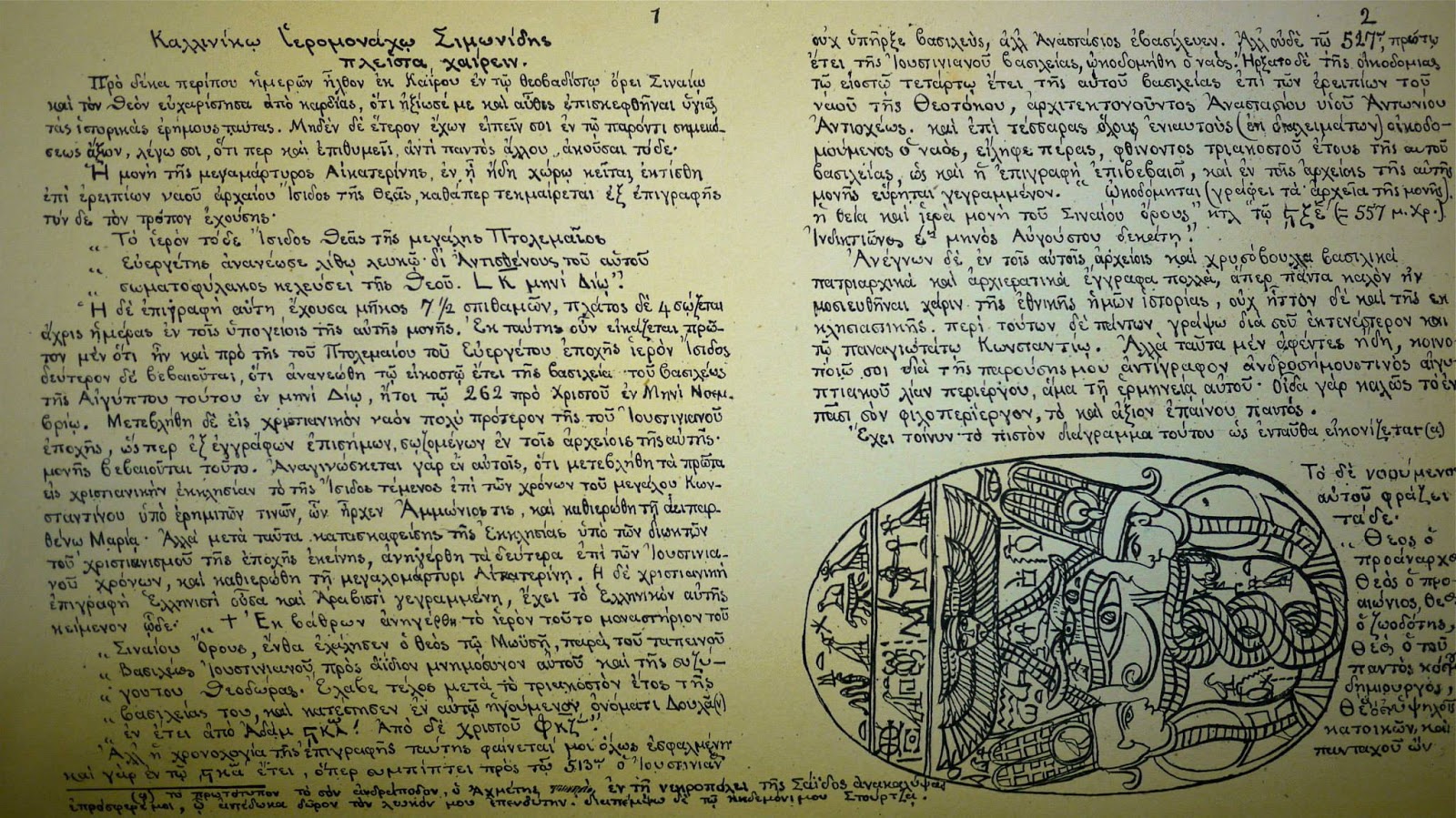TwoNoteableCorruptions
Well-known member
Was his calligraphy skills good enough to forge the Codex Siniaticus?
Do his known forgeries written in Greek Uncial (uppercase or capitals) script look anything like the Greek Uncial handwriting(s) of the main three Scribes uppercase handwriting in the Codex Siniaticus?
This thread will require images and links to photographs of his forgeries, letters, books etc with his known handwriting.
In the 1860's (Simonides time), it was also testified, in front of multiple witnesses, that at least one letter that professed to be written from Simonides Kallinikos to a newspaper was written in Simonides own personal handwriting (in standard modern Greek style i.e. lowercase) which was discovered by a side by side comparison with known letters Simonides had written to certain people.
Is it possible to do the same today?
Some of Simonides correspondence has survived in museums and universities and private collections down to today.
So feel free to post any images, screenshots, or links to examples of:
NOTE: Malcolm Choat, Yuen-Collingridge, and Tommy Wasserman are the current world experts on Simonides handwriting and forgeries. Will post links to there online platforms which will have there contact info.
NOTE: The manuscripts referred to above at Mt Athos can be viewed (if they have been digitised yet) by filling out a request form on their website. Will post link later (on my phone right now and don't have all my research files available).
NOTE: Distinction needs to be made between Simonides' hiero-monarchos Kallinikos and the multiple monarchos Kallinikos's at Mt Athos, and the hiero-monarchos Kallinikos at Mt Sinai etc.
- What was Simonides handwriting like?
- What was Simonides' hiero-monarchos Kallinikos handwriting like?
- What was monarchos Kallinikos handwriting in the Mt Athos manuscripts listed as number (6406, 8399) in the Lambros catalogue of Mt Athos like? Is it the exact same handwriting as in his 1860's letters to the news papers? (You would expect it to be to a reasonable degree - same with Simonides').
Do his known forgeries written in Greek Uncial (uppercase or capitals) script look anything like the Greek Uncial handwriting(s) of the main three Scribes uppercase handwriting in the Codex Siniaticus?
This thread will require images and links to photographs of his forgeries, letters, books etc with his known handwriting.
In the 1860's (Simonides time), it was also testified, in front of multiple witnesses, that at least one letter that professed to be written from Simonides Kallinikos to a newspaper was written in Simonides own personal handwriting (in standard modern Greek style i.e. lowercase) which was discovered by a side by side comparison with known letters Simonides had written to certain people.
Is it possible to do the same today?
Some of Simonides correspondence has survived in museums and universities and private collections down to today.
So feel free to post any images, screenshots, or links to examples of:
- Simonides' handwriting
- Simonides' known forgeries
- Young Simonides' handwriting in the Mt Athos manuscripts listed in the Lambros catalogue
- Kallinikos' handwriting
- Kallinikos' letters
- Especially - the Kallinikos handwriting in the Mt Athos manuscripts listed in the Lambros catalogue
- Benedict's handwriting in the Mt Athos manuscripts listed in the Lambros catalogue
NOTE: Malcolm Choat, Yuen-Collingridge, and Tommy Wasserman are the current world experts on Simonides handwriting and forgeries. Will post links to there online platforms which will have there contact info.
NOTE: The manuscripts referred to above at Mt Athos can be viewed (if they have been digitised yet) by filling out a request form on their website. Will post link later (on my phone right now and don't have all my research files available).
NOTE: Distinction needs to be made between Simonides' hiero-monarchos Kallinikos and the multiple monarchos Kallinikos's at Mt Athos, and the hiero-monarchos Kallinikos at Mt Sinai etc.

